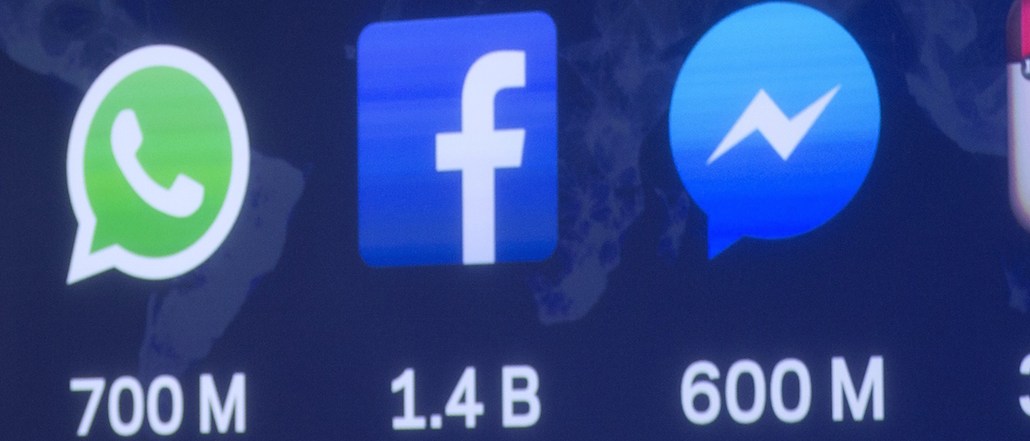What brands and publishers need to know about Facebook’s developer conference

If there’s one insight to be taken away from F8, Facebook’s annual conference for app developers, on Wednesday, it’s that Facebook is gradually positioning itself to become the data, media-consumption and sharing backbone for the entire digital media industry.
Between making its user data more portable, building out a “family of apps” that caters to specific forms of communication and enabling more robust media experiences within those apps, Facebook is aiming to be the Internet equivalent of a broadband provider — providing the means by which all media is published and accessed.
Here’s what brands and publishers need to know about this evolution.
Data
It was telling that Mark Zuckerberg kicked the event off with stats about how much more often in the past year users used Facebook’s login to sign into a wide array of apps and websites. At F8 2014, Facebook gave users more control over what information they shared with other apps when using the feature. Since then, the number of people using Facebook login has increased 10 percent, and 80 percent of the world’s top grossing apps use it, according to Zuckerberg.
That growth gives Facebook more insight into the apps and media its users like to consume when they’re not on Facebook. And it’s helping Facebook grow Audience Network, its mobile app ad network. Ads served through Audience Network cost seven times that of typical mobile banner ads, Facebook’s director of platform Deborah Liu said.
But the biggest data-related announcement was that Facebook user data would now be available in its video ad network LiveRail, allowing publishers to sell more precisely targeted video ads and, in turn, demand higher CPMs.
A growing “family of apps”
The only phrase Zuckerberg used more than “content” during the presentation was “family of apps,” his term for Facebook’s ongoing effort to create an array of single-use apps that narrowly focus on a particular form of communication.
“Facebook used to be this single blue app, and it did a lot of different things,” Zuckerberg said. Those days are gone, though. Zuckerberg highlighted the user numbers for various Facebook-owned apps, including WhatsApp (700 million users), Groups (700 million), Messenger (600 million) and Instagram (300 million). Recently launched standalone apps Paper, Slingshot and Rooms weren’t mentioned, however, perhaps because they have failed to gain the same type of traction among consumers.
Despite the mixed success with launching new apps, Zuckerberg assured the crowd “this family is going to keep on growing.” So expect the number of Facebook-owned platforms to proliferate, be it via acquisition or in-house development.
Content, content, content
Did we mention that Zuckerberg mentioned content a lot during his presentation? The sheer ubiquity of the term during his keynote speech perfectly crystalizes Facebook’s view on the subject: It simply can’t get enough content. The more media flowing through Facebook and its app family, the more users will visit those destinations. The most widely discussed of these initiatives at the moment is Facebook urging publishers to post their articles and videos directly to Facebook.
But Facebook announced several smaller new features that will make its relationship with publishers slightly closer still. For publishers that use Facebook for their comments sections, comments will now appear on both the publisher’s website and the publisher’s Facebook page. So when you comment on a Huffington Post story about parenting, your Facebook friends will see your comment on Facebook, regardless of whether they ever venture to the Huffington Post story directly.
Facebook is also making its native video player embeddable on other sites. Facebook’s Liu showed a video of Patricia Arquette’s Oscar acceptance speech embedded into a BuzzFeed story to demonstrate. The move might increase view rates for Facebook videos, but Liu did not comment on how the tool would help publishers earn money from their original videos. If Facebook’s early partnerships with Fox Sports and the NFL are any indication, it will likely sell post-roll ads against videos and split revenue with publishing partners.
Messenger
A major component of that strategy is making Messenger even more robust. Facebook’s messaging app now has nearly as many users as WhatsApp, the messaging company it bought for $19 billion last February.
Messenger will cease to be just an app, Zuckerberg said. Rather, it will be a platform in its own right — app developers will be able to build features meant to live within Messenger, and brands and publishers will now be able to access consumers through it.
Messenger will now suggest certain apps to download, providing developers with a new avenue for driving downloads and, potentially, a new venue for Facebook to serve app download ads. Messenger Business, for example, will allow users to receive receipts and shipping updates for products they buy. The brands sending those objects can in turn use Messenger to handle any customer service issues.
Even publishers like ESPN and The Weather Channel are focused sharing through Messenger. Photos from Weather’s mobile app can now be easily shared through the app. And sports fans can now send highlights from ESPN through the Messenger.
Whether its ingesting publishers’ media or providing tools for publishers to embed media posted to Facebook, the social network is trying to make sure that more, if not all, media flows through its properties in some form.
Homepage image courtesy Getty Images
More in Media

What publishers are wishing for this holiday season: End AI scraping and determine AI-powered audience value
Publishers want a fair, structured, regulated AI environment and they also want to define what the next decade of audience metrics looks like.

Media giant Essence launches a marketplace for Black women-led brands
Essence has launched WeLoveUs.shop, a new online marketplace dedicated to Black women-led brands.

In Graphic Detail: The state of AI referral traffic in 2025
The stats reveal a new audience pipeline forming outside of traditional search and social platforms.





